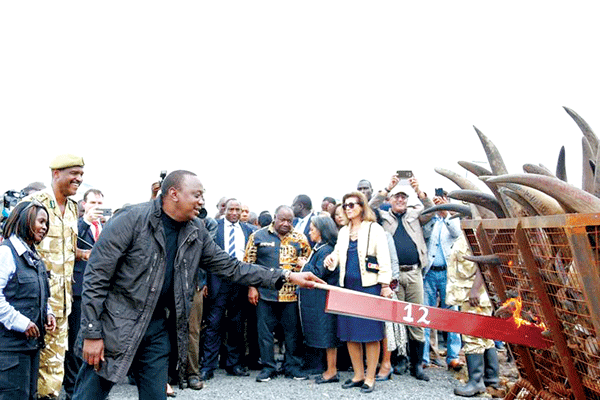
Introduction and general overview
Notwithstanding that Zimbabwe’s economy is evidencing the first sign of upturn, albeit very moderate in extent, nationwide despondency and negative perceptions continue to prevail, inevitably motivated by 16 years of near continuance of economic decline.
There can be no realistic expectations of any near-future major economic growth, unless some very significant and positive policy changes are pursued by government, but nevertheless inflation has been very markedly contained, and economic productivity and volumes have marginally increased.
Overview by economic sectors
Economic Growth The World Bank has estimated Zimbabwe’s economic growth at 3% for 2013, stating that the growth performance was curbed by such factors as diminishing international commodity prices, miniscule investment, stringent credit conditions, and political instability and uncertainties ahead of the July, 2013 presidential, parliamentary, and Senate elections.
Economic Sector Performances Agriculture For very many decades agriculture was the foundation of the Zimbabwean economy, but since the 1990s its contribution has declined, primarily in consequence of a grossly destructive land reform programme, governmental mismanagement of inputs procurement, water constraints, absence of adequate funding, and declining international commodity prices. To a significant extent, the agricultural decline was represented by a major reduction in maize and cotton production, primarily occasioned by negative climatic conditions. Maize production was 798600 tonnes, representing a decrease of 17,5% against 2013, and only 44% of the national need of 1,8 million tonnes. Cotton production in 2013 was an estimated 108 832 tonnes, as compared with approximately 350 000 tonnes in 2012. Those diminished outputs were partially compensated for by an approximate 20% increase in tobacco output.
Mining Although the mining sector is currently the major contributant to the economy, it was also constrained in 2013. Declining mineral prices in general, and of gold in particular, impacted negatively on the value of mining output, compounded by a decline of approximately 17% in gold production, by labour unrest, and increased wages, vigorously demanded by labour. In contradistinction, platinum production rose by approximately 6% over 2012, albeit negatively affected by decline in prices. Diamond production, in contrast, declined marginally, notwithstanding intensified containment of smuggling and illicit dealings.
Manufacturing The manufacturing sector continues to be afflicted by low local market consumer demand, severe competition from inputs, absence of export incentives, erratic energy supplies, limited capital resources and absence of substantive credit facilities, recurrent wage-related labour disputes, ageing plant and machinery at variance with international technological developments, and considerable emigration of the technically-skilled.
- Chamisa under fire over US$120K donation
- Mavhunga puts DeMbare into Chibuku quarterfinals
- Pension funds bet on Cabora Bassa oilfields
- Councils defy govt fire tender directive
Keep Reading
Estimated output of the sector in 2013, was 1,5% above 2012.
Commerce and Services The commercial and services sectors continued to be very constrained, the former primarily due to the very limited availability of consumer spending power, rising overheads, and inadequate access to credit facilities, and the latter because of the overall decline in the industrial, financial and commercial sectors.
Financial Sector The combination of miniscule recourse by the populace to utilisation of financial sector services, and of absence of substantive regional and international lines of credit, has continues to impact negatively upon the financial sector, save and except that prices on the Zimbabwe Stock Exchange have generally risen, as foreign and domestic investors, although in limited numbers, have primarily focused upon investment in public companies.
Exchange Controls. On January 3 2014 the Reserve Bank of Zimbabwe (RBZ) issued a directive, prescribing:
- Use of Multi-Currencies In addition to possible opening of FCAs denominated in Botswana Pula (BWP), British Pound (GBP), Euro (EUR), South African Rand (ZAR) and United States Dollar (USD), individuals and corporates may also open FCAs denominated in Australian Dollars (AUD), China Yuan Renminbi (CNY) and Japan Yen (JPY). MBCA Bank currently offers all the above mentioned traditional trading currencies including the added Australian dollar and the Japanese Yen.
- Corporates and individuals can be multi-banked i.e. have such accounts with as many banks as they wish.
- Gold Marketing and Export Framework Fidelity Printers and Refiners are now the sole buyer of Gold with effect from January 12014. Fidelity Printers and Refiners shall be responsible for mobilisng gold from small scale gold producers. Fidelity Printers and Refiners are now the sole exporters of gold with effect from January 12014.
- Capital Account Transactions All capital account transactions, such as disinvestment proposals, cross border investments, dilutions, mergers and acquisitions, restructuring and right issues of shares and appeal and policy proposals shall continue to be approved by the Reserve Bank of Zimbabwe.
Reserve Bank of Zimbabwe (RBZ)
- Although the second (and last) term of governor Gideon Gono terminated, in compliance with the Reserve Bank of Zimbabwe Act, on November 30 2013, a successor is yet to be appointed, pending which the senior deputy governor,. Charity Dhliwayo, is acting as governor.
- A Cabinet announcement intimates that government will assume a $1,35 billion RBZ indebtedness, to be followed by a progressive recapitalisation of RBZ.
- On November 27, 2013, then RBZ governor, Gono announced that the Memorandum of Understanding (MoU) signed with bank rates would not be renewed, the banks thereafter determining their rates.
The Consumer Council of Zimbabwe (CCZ) assessed that the basic cost of living (Poverty Datum Line – PDL) for a family of six in December, 2013 was $564,72, being 0,48% greater than in November, 2013.
Conclusion
- In his budget statement on 25th November, 2013, the Finance minister Patrick Chinamasa, intimated 14 intended changes to direct and indirect taxation. Details are still awaited, to be contained in the Finance Bill to be set before Parliament and the Senate in February, 2014.
- Economic outturn in 2014 will be significantly contingent upon:
- Agricultural outturn, currently projected at 3% above 2013;
- The aforesaid awaited taxation measures;
- Enhanced financial sector liquidity;
- Enhanced, regular, availability of utilities in general, and electricity and water in particular.










